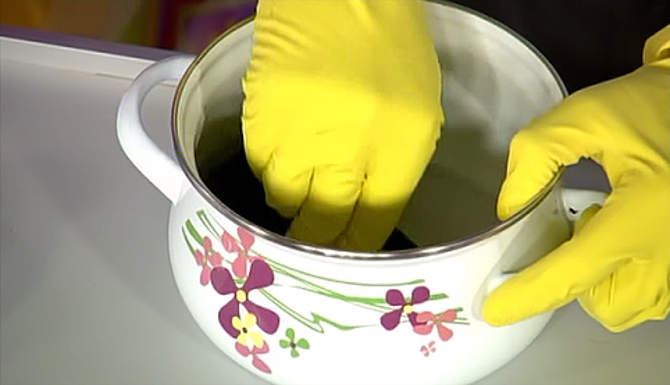Types of pans
Often the speed, ease of cooking, and the taste of the finished dish depend on the pan used. Kitchen utensils are made from various materials, have different shapes, volumes and purposes. All this must be taken into account when purchasing a saucepan.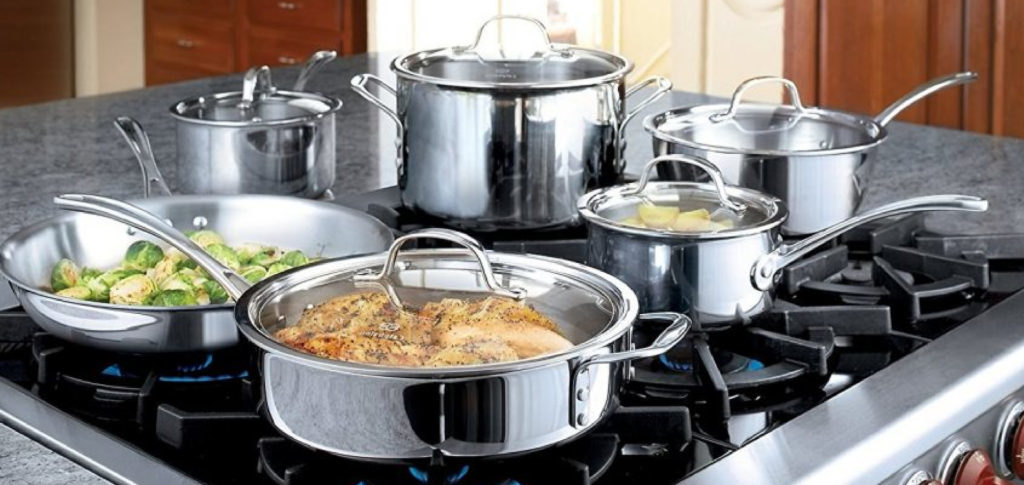
The content of the article
Classification of pots by material of manufacture
The purpose and characteristics of pans depend on the material from which they are made. One material is durable and can withstand high temperatures well. The other is more practical and easy to use.
To make pots use:
- cast iron;
- aluminum;
- glass;
- ceramics;
- stainless steel;
- silicone
Each of the materials has its own characteristics. Some are suitable for use with induction cooktops, while others are universal. To choose the most suitable option, you should familiarize yourself with the characteristics, advantages and disadvantages of each option.
Aluminum cookware
Aluminum kitchen utensils are the most common. Such products are multifunctional - they can be boiled or fried.
The advantages include:
- light weight;
- low cost;
- fast heating.
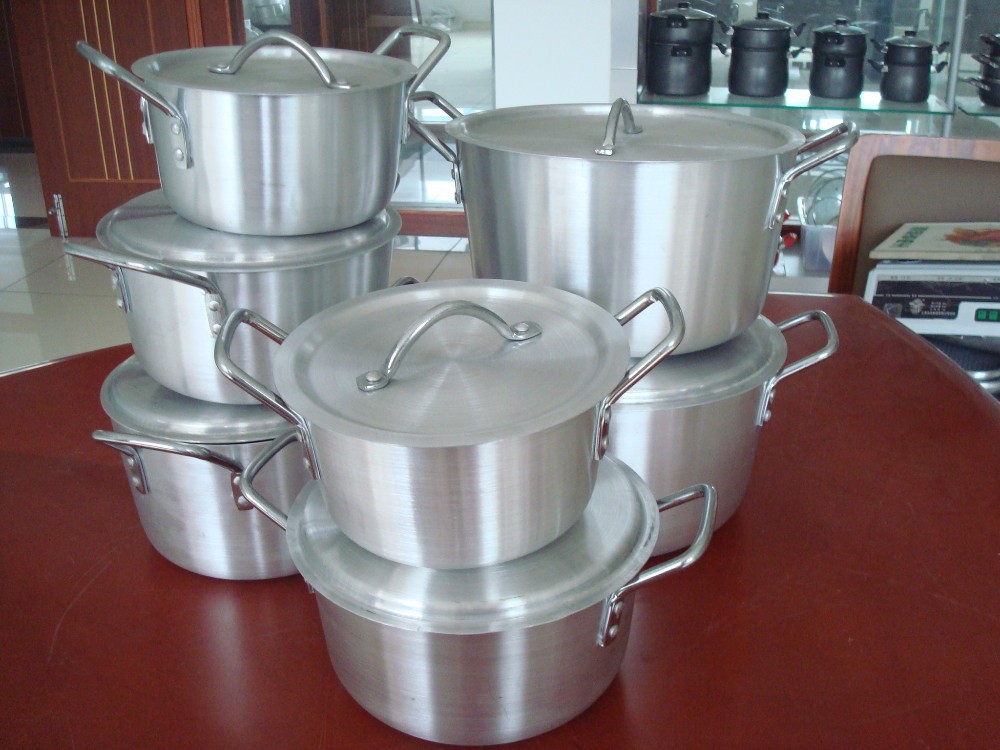
The disadvantages are:
- aluminum is a soft material and therefore easily deformed;
- darkens over time;
- can enter into a chemical reaction with food - this leads to a change in the taste of products.
Modern models are made of cast metal. You can not only cook in them, but also stew and fry. But even this option tends to oxidize, so you cannot store cooked dishes in an aluminum pan.
Reference! To prevent aluminum from oxidizing, pans are made with a non-stick coating. You can cook any food in such dishes.
It is necessary to choose a pan with thick walls and a bottom, with a tight-fitting lid. The handles must be secured with bolts.
Enameled
Light and beautiful enamel pots are in great demand among housewives. The coating completely eliminates contact between food and metal. This prevents oxidation and the possible entry of harmful substances into dishes. Durable, practical cookware has the following advantages:
- water boils quickly in it;
- You can store ready meals;
- is inexpensive;
- tolerates temperature changes well.
The disadvantage of such dishes is the fragility of the coating. To care for such kitchen utensils, do not use rough metal brushes or abrasive cleaning agents. Also, the enamel should not come into contact with acid-containing substances.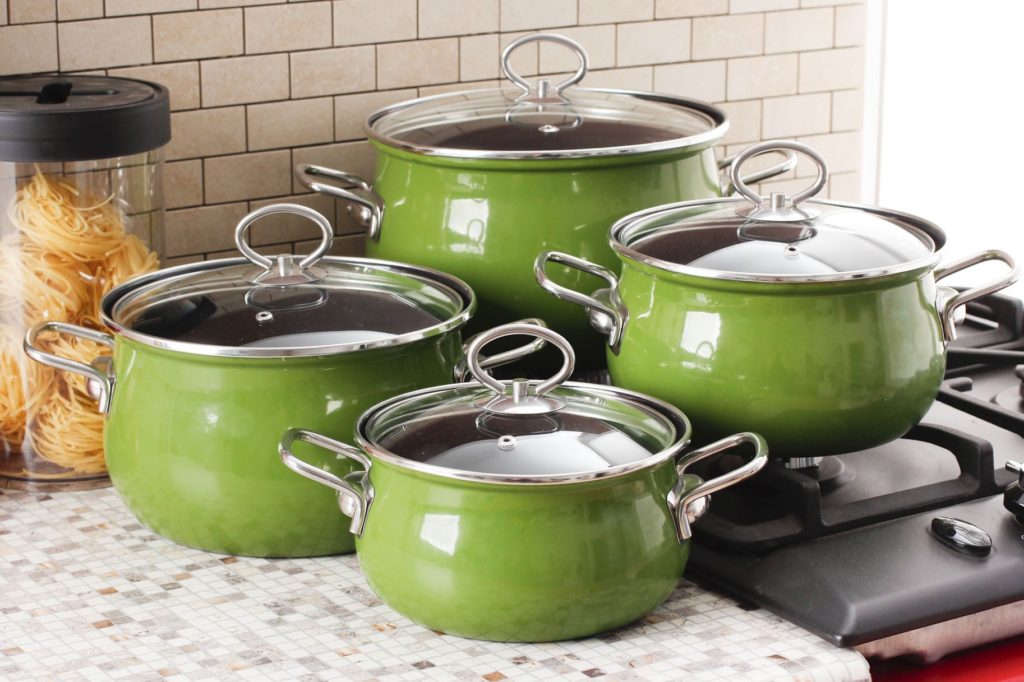
Attention! When choosing enamel cookware, you need to look at the color of the coating inside the pan. Safe are: white, brown, black. Other colors indicate that dyes were used.
Stainless steel
Kitchen utensils made of stainless steel are distinguished not only by their aesthetic appearance. Such products are practical and functional. You can cook any dishes in them - stainless steel is not subject to corrosion, which means the taste of the food will remain unchanged.
The advantages are:
- durability;
- resistance to mechanical stress.
The dishes are easy to care for. She is not afraid of metal brushes, scrapers, and abrasive cleaning agents.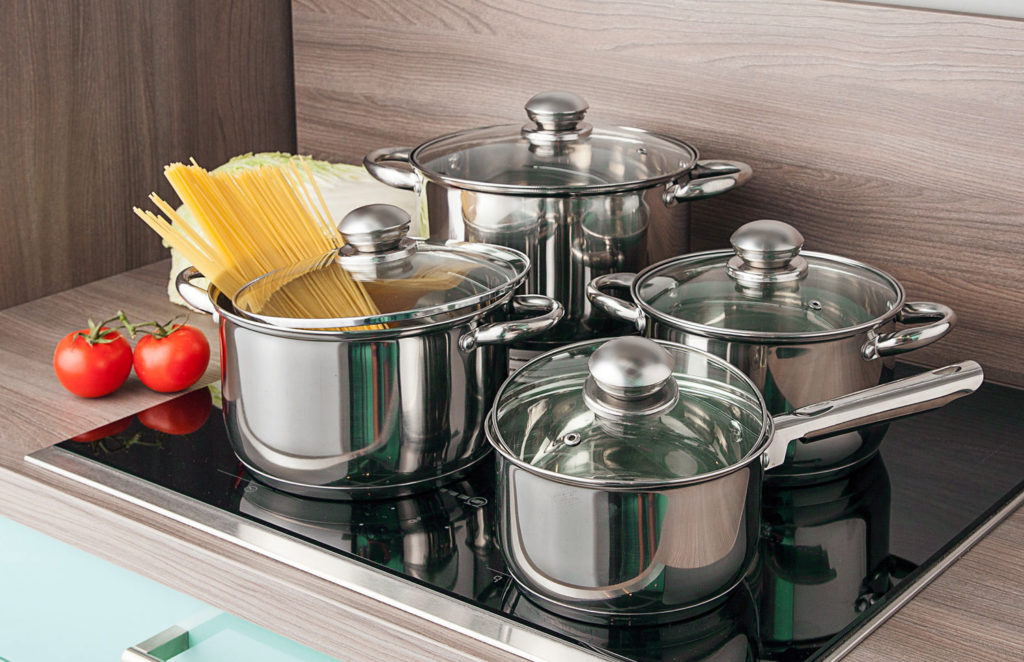
Disadvantages include:
- high price;
- over time, the product becomes dull, spots and stains may appear on the bottom;
- takes a long time to heat up.
Attention! Before purchasing, you need to pay attention to the walls of the product. If you plan to stew in a dish, then you need to purchase a pan with a wall thickness of at least 1 mm.
Cast iron
Products made of cast iron have a long service life. The material heats up quickly and cools down extremely slowly. Therefore, cast iron kitchen utensils are ideal for stewing, simmering, and baking. Such products can be placed in the oven, as well as in the Russian stove.
The advantages of the material are:
- durability - with proper care, cast iron cookware can last for several decades;
- resistance to mechanical stress;
- the presence of a natural non-stick coating, which is formed from oil absorbed into the porous surface of the metal.
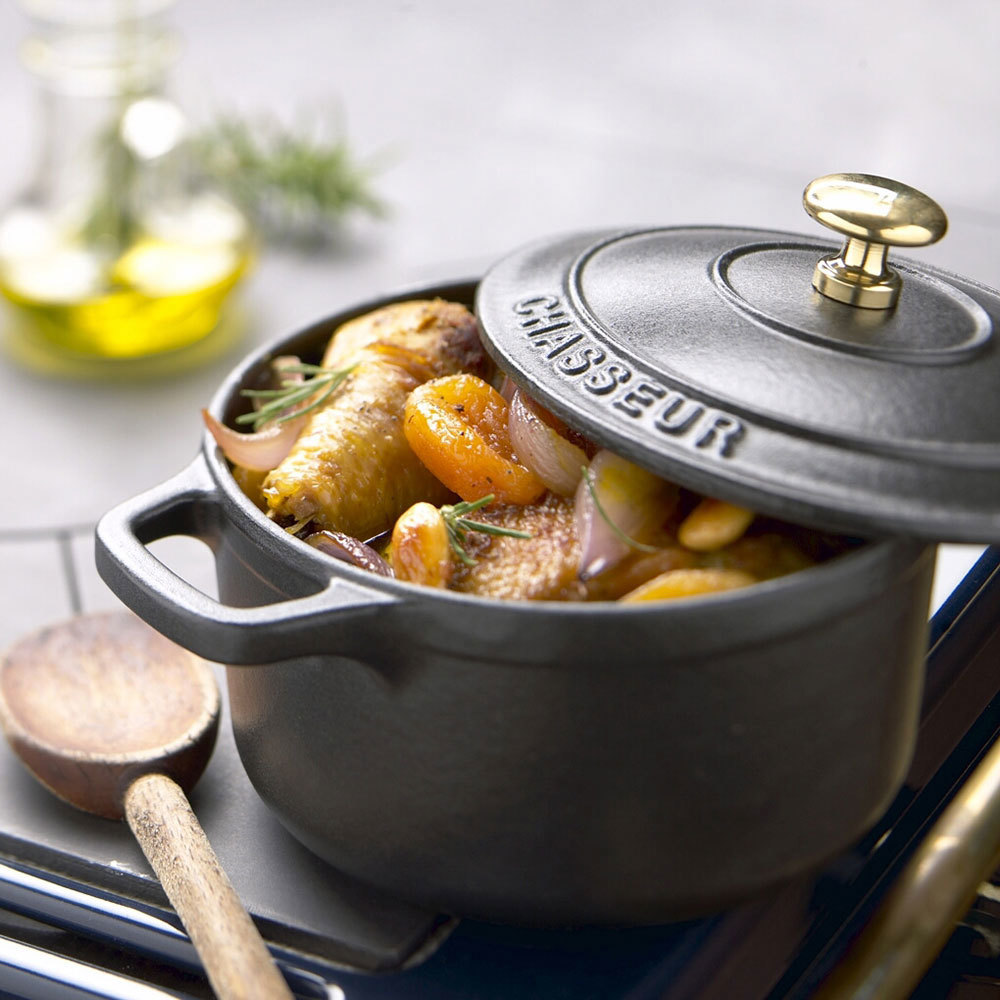
Disadvantages of cast iron cookware:
- weight is the heaviest dish;
- Can only be washed by hand;
- impossibility of storing ready-made dishes - cast iron is prone to rust;
- takes a long time to heat up, which leads to longer cooking times.
Attention! When purchasing cast iron cookware, you need to pay attention to the surface and weight of the product. The surface must be porous and the product must be heavy.
Made from heat resistant glass
Glassware has become popular thanks to microwave ovens. This is practically the only kitchen utensil that can be used in the microwave.
Such pans are quite durable - the walls of the product are thick, they are difficult to damage or scratch.
The advantages include:
- aesthetic appearance;
- food does not burn during cooking;
- retain heat well.
- easy care.
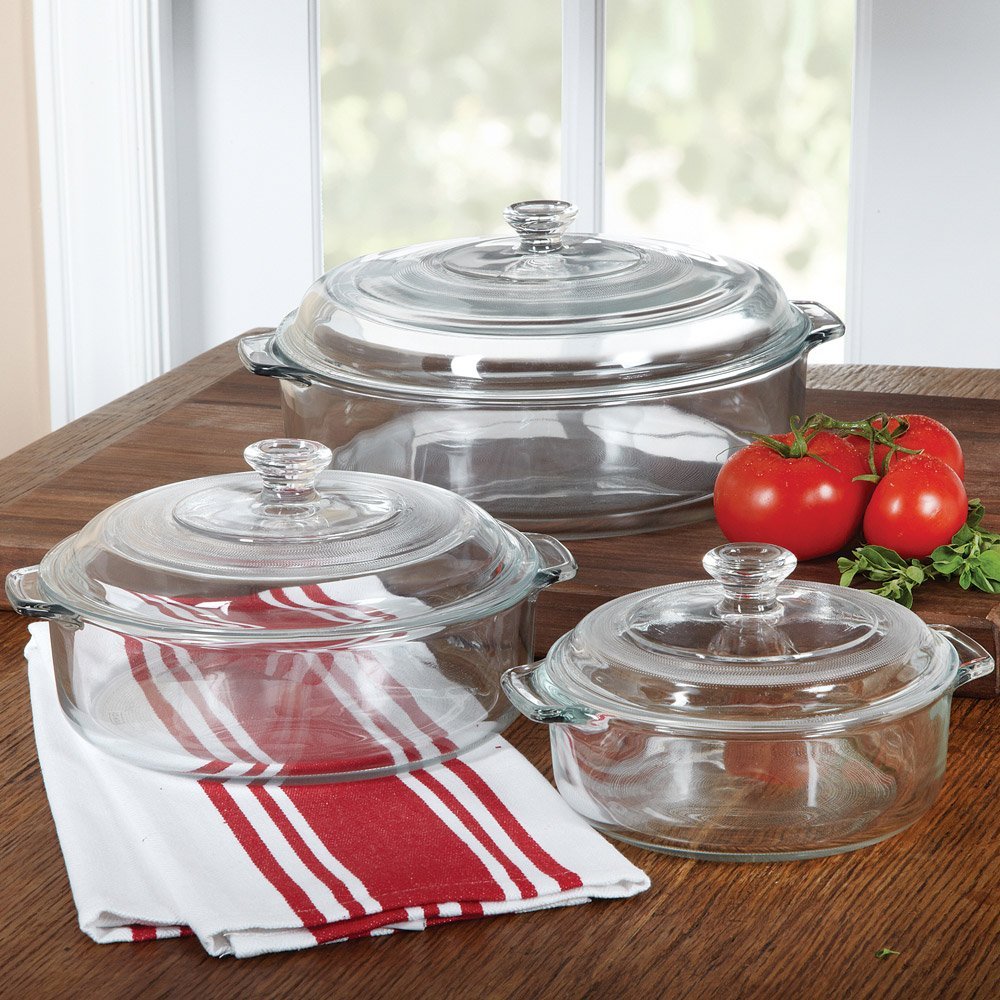
Disadvantages of glassware:
- cannot be placed on an open fire without a special fire spreader;
- cannot tolerate sudden changes in temperature;
- If dropped, the product may break.
Attention! Before purchasing, you need to examine the walls of the product - there should be no air bubbles in the glass. Otherwise, the kitchen utensil may crack during cooking.
Glass kitchen utensils can be used for frying, baking, stewing, and baking.
Ceramic
Only natural materials are used to make ceramic kitchen utensils. Therefore, during the cooking process, all useful substances, minerals, and vitamins are preserved. Most often, ceramic pots are used, which can be served directly on the table.
Advantages of ceramics:
- versatility: you can cook any dishes in ceramic dishes;
- cooking does not require a lot of oil;
- food does not burn;
- Suitable for all cooking options.
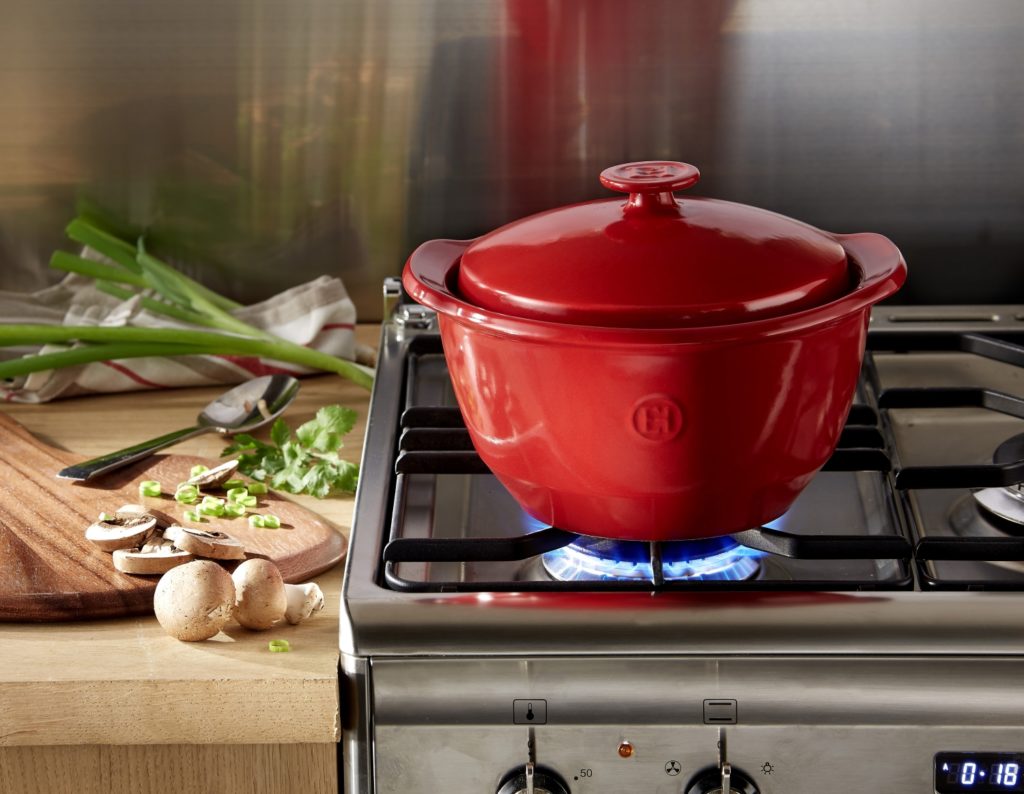
The disadvantages include:
- high cost;
- fragility - if dropped or hit, it will break;
- cannot tolerate sudden changes in temperature.
The product requires careful handling. If the glaze is damaged, the food will start to burn.
Made from silicone
Products made from food grade silicone are the most modern version of kitchen utensils. Despite its novelty, such dishes have already gained popularity among housewives.
Cookware made from food-grade silicone is flexible, lightweight and versatile. It can be used for cooking on the stove, in the microwave or oven. Products do not burn in it.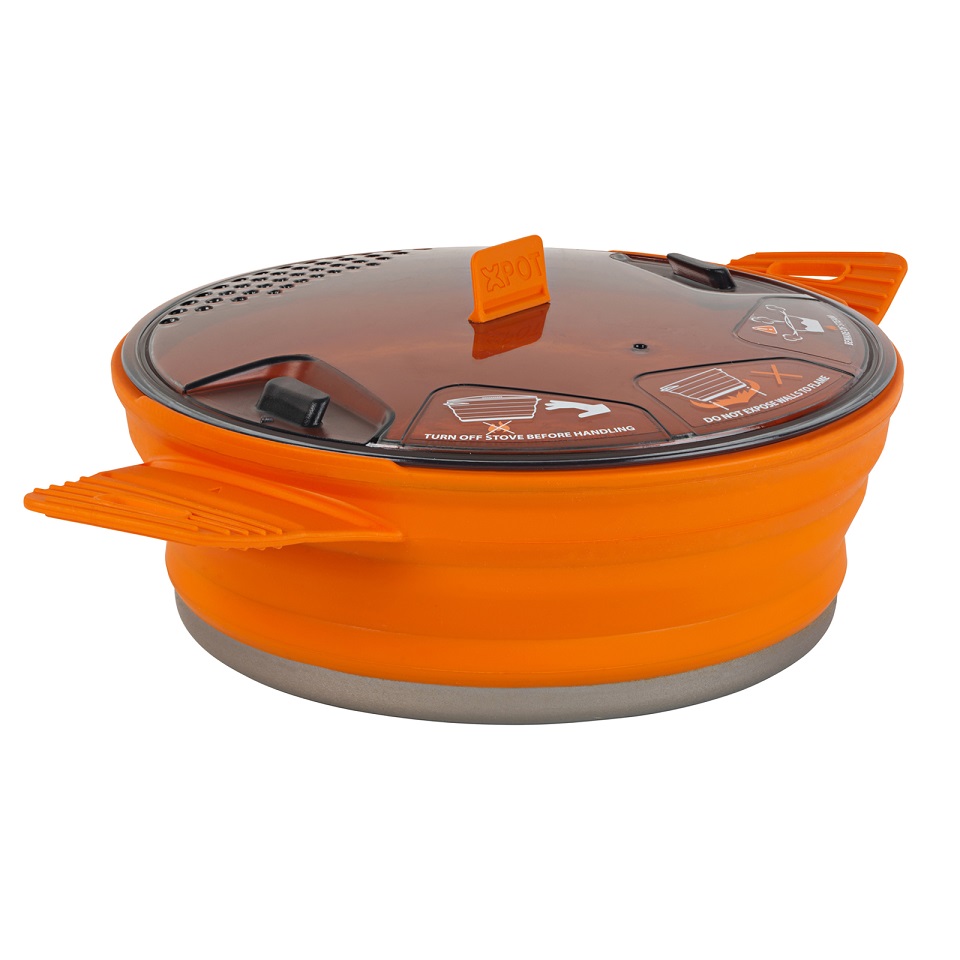
Manufacturers produce unusual folding models that are an excellent option for small kitchens.
Non-stick coating
Teflon-coated products are one of the most popular types of cookware. During the cooking process, Teflon does not come into contact with food. Therefore, cooking food is completely safe. Another advantage of such products is that they require a small amount of fat for cooking. But these utensils require careful handling - Teflon is easy to scratch.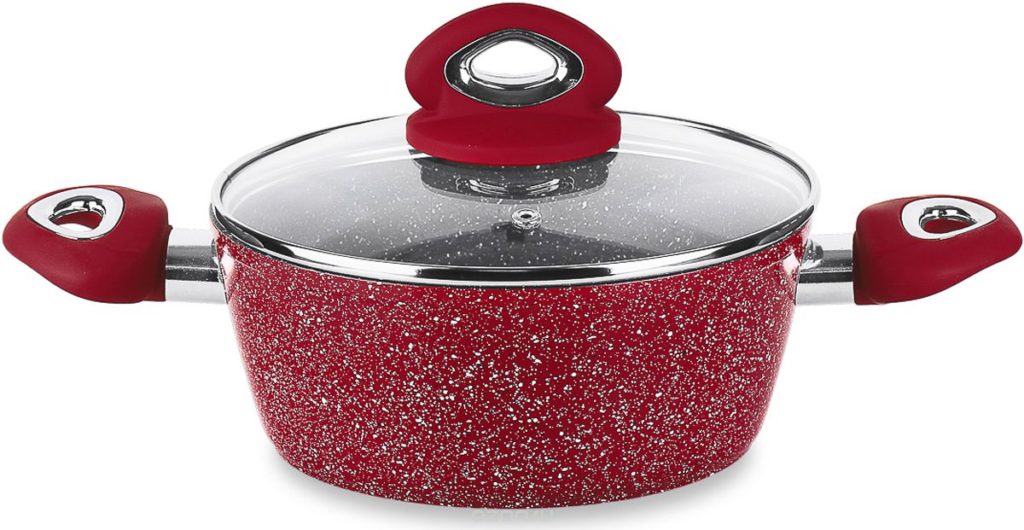
Types of pans for special tasks
On store shelves, in addition to ordinary pots, you can see kitchen utensils that are used for specific tasks or preparing certain dishes:
- Saucepan. It looks like a frying pan with high sides. Suitable for preparing thick soups, sauces, stews.
- Milkman. A ladle with high sides, necessary for heating, boiling, preparing small portions of dishes, porridge.
- Ladle. Small saucepan with a handle. Most often used for boiling eggs, cereals, and boiling water.
- Kazan. Dishes with a thick bottom. Essential for cooking oriental dishes.
- Double boiler. It is a saucepan with a wire rack. Used for steaming dishes.
- Pasta pan. Outwardly it looks like a saucepan in which a colander has been placed. Water is poured into a large container, after which a small saucepan with holes is placed in it. Pasta is poured into the container. After cooking, remove the colander and allow the remaining water to drain. It has a variety - a vegetable cooker. It differs in that instead of a “colander” it uses a mesh with a long handle.
- A saucepan with a double bottom.Used for cooking porridge. The product has an additional bottom and walls. Water is poured into the resulting space, which ensures uniform heating of the pan. As a result, the porridge does not burn, and the finished dish turns out tender. The taste of the porridge is not inferior to that cooked in a Russian oven.
- With frying pan lid. A multifunctional product, both parts of which can be used separately.
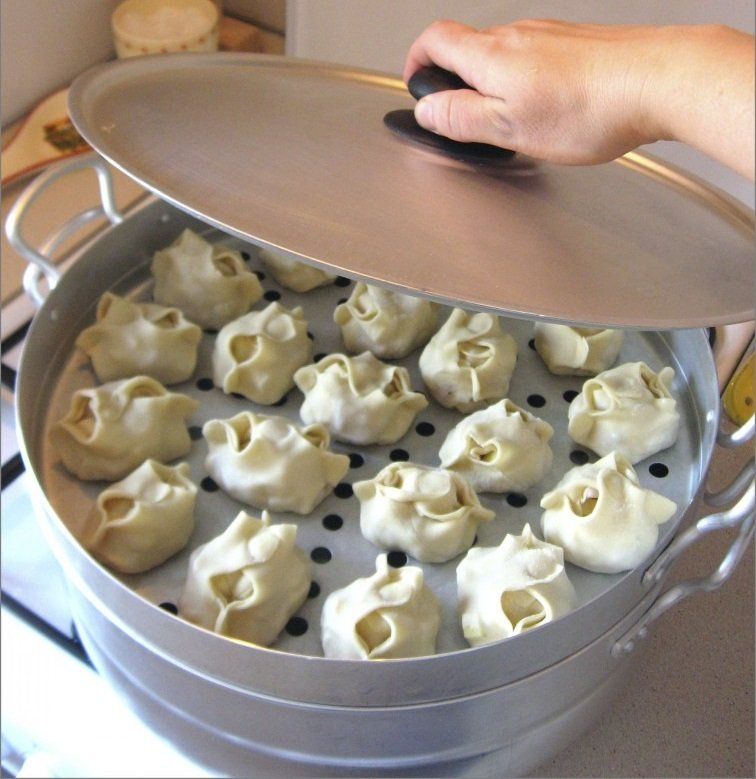
Different sizes of pans
In addition to materials, pans vary in size. Several main parameters can be distinguished:
- Diameter of the bottom and lid.
- Height.
- Product volume.
Diameter is one of the most important characteristics that must be taken into account when choosing a product. Knowing the size of the upper part is necessary in order to choose the right lid, and the lower part is necessary to select a pan that is suitable in size for the burner.
For a stove with gas burners, the diameter of the bottom is not a determining characteristic, since the intensity of the flame can be adjusted.
For a stove with a glass-ceramic coating, it is advisable to use pans whose bottom diameter matches the size of the burners.
The bottom of the pan for an induction cooker is the closing loop. If you use a small product, the stove may not turn on.
Tall pans with a small bottom diameter are used to cook spaghetti. Water in such models evaporates slowly when boiling.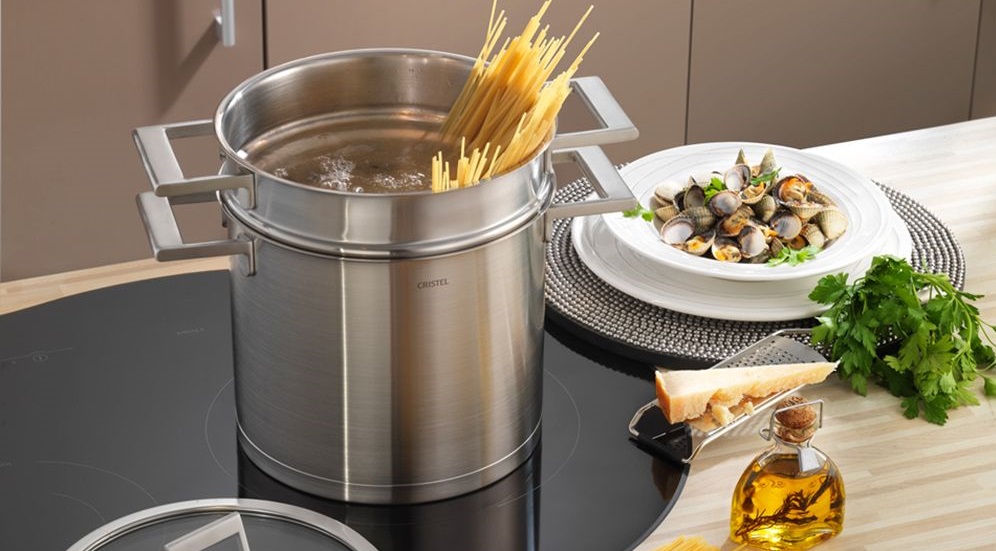
The volume must be taken into account when determining what the pan will be used for:
- 1-3 l - the best option for preparing small portions of dishes, porridge, boiling;
- 3-5 l - used for cooking soups, meat, pasta and other products;
- more than 5 l - a good option for making compotes and pickles.
Reference! Many chefs consider the pan to be one of the most important kitchen accessories, which affects the taste and appearance of the prepared dish.
Before purchasing, you need to decide on the material, size, number of items, and wisely choose comfortable handles and a lid. And then the dishes will last for many years, and the prepared dishes will be healthy and tasty.




